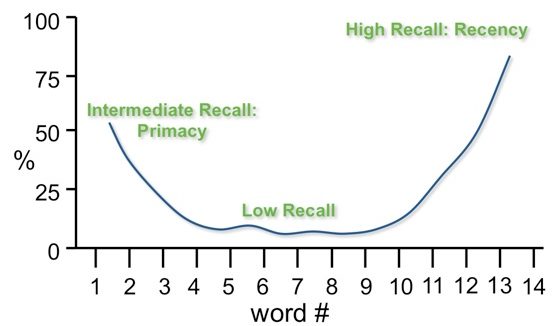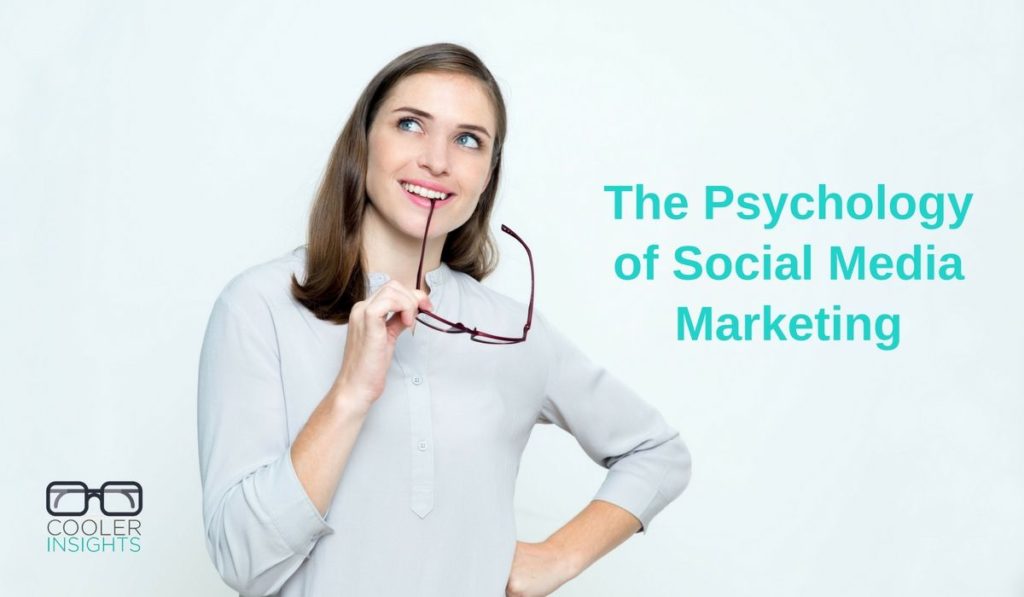Wonder why your social media campaigns fail to generate responses? Wish to improve your social media marketing efforts?
Consider peeping into the most amazing technology of all time – the human brain.
Now I know that many digital marketers love to indulge in the world of algorithms and automation when it comes to marketing. Terms like Martech (marketing technology), programmatic buying, AI, micro-moments, attribution, and others are repeatedly lauded in certain digital marketing circles.
While it is useful for us to understand how search and social media algorithms, chat bots, and hyper-local strategies can improve our social media game, such techniques (and technologies) are futile if you do not first understand how your audiences think, feel and behave.
“In social media marketing, psychology trumps technology.” – Walter Lim
Mark Zuckerberg certainly knows this. Under his direction, Facebook, Instagram and WhatsApp constantly tweak their algorithms to respond to the psyche and behaviours of their users. The latest changes in Facebook’s News Feed is a case in point.
For ease of reference, I have grouped the psychological phenomena influencing social media behaviours into 3 categories:
- Cognitive biases and their impact on social media
- The psychological effects of media
- Psychological and social triggers of sharing
#1 Cognitive Biases
Much as we would hate to admit it, human beings are irrational creatures. Often, how we think, feel and act may not follow the most logical path forward.
As a social media marketer, its good to understand how these cognitive biases work, and what you can do about them.
Anchoring – First Impressions Last
The age-old saying “first impressions last” is more relevant now than ever before. This phenomenon is known in psychology as anchoring, and it describes the common human tendency to rely too heavily on the first piece of information offered (the “anchor”) when making decisions.
According to the Association for Psychological Science, online users may decide on your character by glancing at your profile photo in less than 40 milliseconds!
With this in mind, consider carefully how you are using images and videos on social media. A good way to prevent any wrong first impressions is to craft a visual storytelling plan. Ensure that all visual assets are aligned with your brand story and identity.
Confirmation Bias
One of the most widely known psychological phenomena, confirmation bias occurs when your audience’s desire to want something to be true propels them to only look for positive information reinforcing that notion.
This avoidance of “ugly” truths makes them cherry pick evidence which supports what they want. They may also be blindsided to alternative points of view even though these may be factually correct.
To circumvent this, you need to carefully present your ideas in a way that carefully considers your audience’s feelings. Do not attempt to bulldoze an innovative new product through without thinking about the socio-cultural contexts of your customers.
Primacy and Recency Effects

Courtesy of Kas Thomas
Have you wondered why you can recall the start and end of a speech, but not anything in between?
There are two related psychological syndromes here:
- Primacy Effect: Items at the start (eg your first impression of a person or the first paragraph or sentence) are given more importance and would be transferred to long-term memory at the time of recall.
- Recency Effect: Items that occur at the end of a list (eg conclusion) or which happened recently (eg breaking news) are kept in short-term memory at the time of recall.
To address these dual factors, make it a point to start and end your social content pieces with a bang. Ensure that you choose the big images to represent your brand.
If you’re writing a blog post, ensure that your headlines and first paragraphs capture attention, and that you have a memorable conclusion. Ditto for Facebook posts, YouTube videos, and any longer-form content.
#2 Psychological Effects of Media
We are easily influenced by what we read, hear or view online. Often these are triggered by the top stories of the day as reported by both mainstream and alternative media channels.
Here are some ways media affects your social media audiences.
Agenda-Setting
Like it or loathe it, mass media still plays a strong role in influencing public views and opinions.
Known among psychologists as Agenda-Setting Theory, it is the phenomenon whereby issues that receive the most attention from the media tend to be the ones which the public discusses, debates, and demands the most action on. Thus, if the media does not address a specific issue, it will fall off the public radar.
Framing (and Click Baiting)
Framing occurs when messages are presented in a certain way to trigger a desired response.
In the hyper-competitive battle for your meagre attention, online newspapers and magazines have continually fine-tuned their headlines, images and ledes to encourage you to click on them.
Sometimes, framing takes the form of click baiting (or link baiting). Here, content is specially designed to elicit strong reactions from social media users and may take the form of highly controversial and polarising viewpoints. Such methods are now frowned upon by Facebook.
False Causality
Heard or read about fake news? The bane of governments all over the world, fake news often rides on false causality – a phenomenon where unrelated events are associated with each other as they appear to correlate.
While established media outlets tend to shun from such behaviours, the same cannot be said for alternative media channels which rely on Facebook, Twitter, and other social media channels to distribute their “news.”
Conjunction Fallacy
In a similar vein, media outlets may inadvertently perpetrate the conjunction fallacy. This occurs when they develop seemingly harmonious or plausible stories which explain how certain outcomes occur even though they may be purely conjecture.
A common example of the conjunction fallacy occurs when journalists attribute shifts in financial markets to terrorist acts, political turmoil or acts of god (like Earthquakes) even though they may not be related in any way.
How to Respond to Media Effects
To address the influence of media on your social media marketing efforts, consider the following steps:
- Stay in touch with the latest developments in the news, and keep abreast of what’s popular and trending online. You can use tools like Google Trends or Twitter’s Trending topics to do so.
- Explore how you can frame your content in the context of what’s hot and happening, while avoiding the pitfalls of click baiting or engagement baiting practices. A good way to do so is to practice newsjacking.
- Avoid spreading “fake news” cleverly disguised as the real McCoy by propaganda media channels. Websites like Snopes and Scam Alert! may be helpful here.
- Be mindful of media biases in reporting, and only quote from legitimate sources of news when you share a curated post.
#3 Psychology (and Sociology) of Sharing
Finally, and perhaps most importantly, you need to understand the psychological “push buttons” which trigger group behaviours online. This is vital as the ultimate goal of any social media marketing effort is to nudge your community to share your content with their own networks.
There are a couple of things to consider here.
Mirroring, Groupthink and Conformity Bias
Since time immemorial, humans have always behaved differently in groups.
Endowed with what neurologists call “mirror neurons,” we can’t help ourselves from copying the actions (ie mirroring) of those around us whom we identify as members of our tribe. This is why we tend to trust popular eating or retail establishments with long queues.
Our proclivity to copy each other may lead to conformity bias. This is the tendency to behave similarly to the others in a group, even if doing so goes against your own judgment. You can commonly see this happening in tightly knitted social groups – both online and offline.
Groupthink is the other related psychological phenomenon. This normally occurs in groups which wish to establish harmony and conformity to minimise conflict. Occasionally, groupthink could lead to irrational decisions as such groups do not wish to accept alternative or critical viewpoints.
With this backdrop in mind, let us now look at what stimulates people to share content on social media.
Understanding Why People Share
Have you wondered why people are sharing videos, articles, and photos on Facebook, LinkedIn, or Twitter?
According to research by The New York Times back in 2011, people love to share content online to achieve the following:
- Provide others with entertaining and valuable content (94%). Sharing the right stuff makes them feel useful and look good.
- Define themselves to others (68%). Sharing defines who they are, and establishes their identity.
- Grow and nourish their relationships (78%). Sharing the right content helps to strengthen relationships and build camaraderie.
- Self-fulfillment (69%). Sharing makes them feel more in touch with the world around them.
- Get the word out on causes they care about (84%). These are usually causes or issues which they feel strongly about.
By knowing what people like to share, you can create and curate shareable social media content which accomplishes either of the points above.
6 Ways to Trigger Social Sharing
If the strategies above aren’t specific enough for you, consider adopting the ideas of Stanford psychology professor Jonah Berger. These viral marketing techniques have been demonstrated in numerous examples — both online and offline.
Author of the book Contagious, he suggested that there are six STEPPS to virality:
- Social Currency: Anything that makes your users look good will be shareable. These could be remarkable facts or content, campaigns with game mechanics, or insider secrets that only members of a community (eg Lady Gaga’s Little Monsters or K-Pop fans) can appreciate.
- Triggers: Seasons, phrases, events, daily activities, or buzzwords that people associate with a term. For example, when you “have a break,” people will immediately think of the brand Kit Kat.
- Emotions: High arousal emotions like awe, amusement (ie humour), anxiety, anger or excitement.
- Practical value: Anything that has good utility or practical use (see Youtility for more info.)
- Public visibility: Also known as social proof, this could be a highly visible action (eg shaving your head bald for “Hair for Hope”) or the number of likes, comments and shares on your social media posts.
- Stories: Probably the most important component of virality, stories help to make your content more memorable. There are several ways to tell stories, including B2B stories.
Conclusion
In an increasingly cluttered online world, you need to go beyond knowing how to use different tools and techniques.
You need to revisit the fundamentals of human behaviours to understand what makes your communities and customers tick.
By learning how the human mind works, you’ll stand a better chance of creating effective social media content and campaigns that resonate with your audience, nudges them to take the right action, and triggers sharing.

